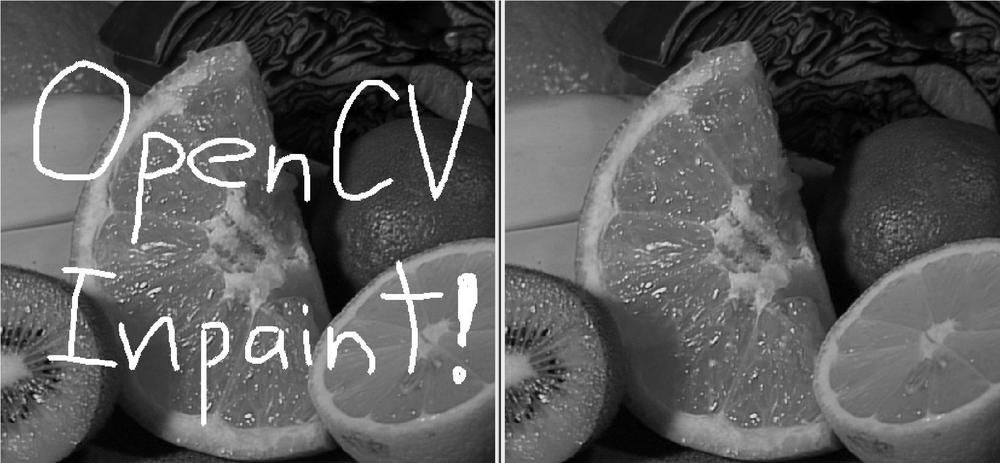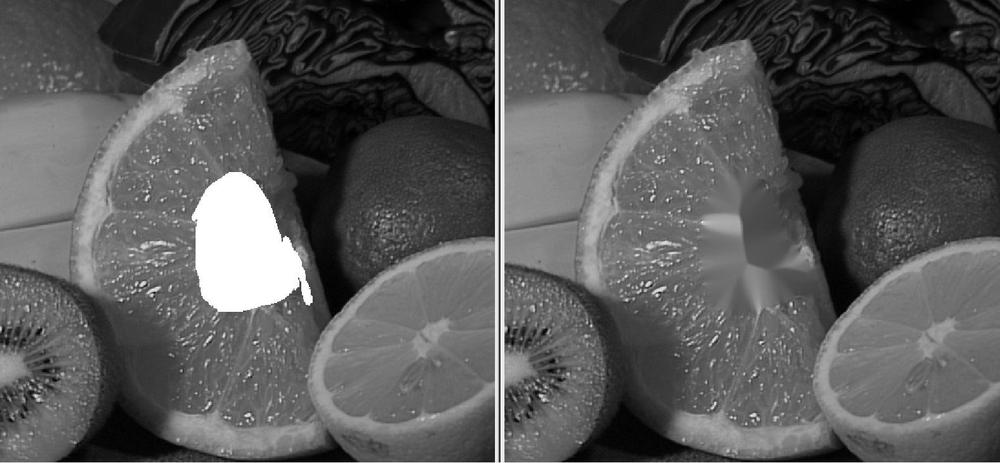Images are often corrupted by noise. There may be dust or water spots on the lens, scratches on the older images, or parts of an image that were vandalized. Inpainting [Telea04] is a method for removing such damage by taking the color and texture at the border of the damaged area and propagating and mixing it inside the damaged area. See Figure 9-9 for an application that involves the removal of writing from an image.
Figure 9-9. Inpainting: an image damaged by overwritten text (left panel) is restored by inpainting (right panel)
Inpainting works provided the damaged area is not too "thick" and enough of the original texture and color remains around the boundaries of the damage. Figure 9-10 shows what happens when the damaged area is too large.
The prototype for cvInpaint() is
void cvInpaint( const CvArr* src, const CvArr* mask, CvArr* dst, double inpaintRadius, int flags );
Figure 9-10. Inpainting cannot magically restore textures that are completely removed: the navel of the orange has been completely blotted out (left panel); inpainting fills it back in with mostly orangelike texture (right panel)
Here src is an 8-bit single-channel grayscale image
or a three-channel color image to be repaired, and mask
is an 8-bit single-channel image of the same size as src
in which the damaged areas (e.g., the writing seen in the left panel of Figure 9-9) have been marked by nonzero pixels;
all other pixels are set to 0 in mask. The output image
will be written to dst, which must be the same size and
number of channels as src. The inpaintRadius is the area around each inpainted pixel that will be factored
into the resulting output color of that pixel. As in Figure 9-10, interior pixels within a thick
enough inpainted region may take their color entirely from other inpainted pixels closer to
the boundaries. Almost always, one uses a small radius such as 3 because too large a radius will result in a noticeable blur. Finally, the
flags parameter allows you to experiment with two
different methods of inpainting: CV_INPAINT_NS
(Navier-Stokes method), and CV_INPAINT_TELEA (A. Telea's
method).

